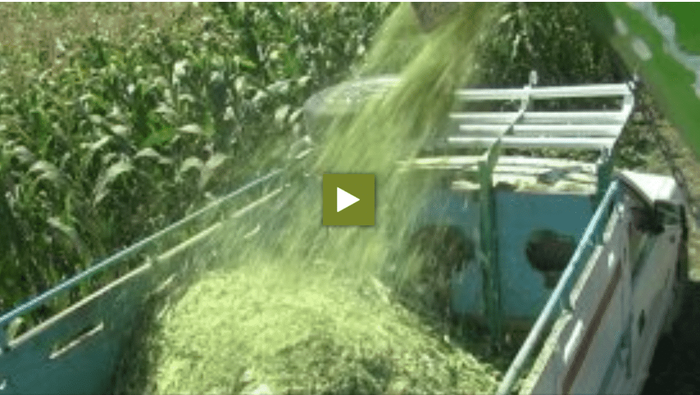The video “silage from maize“ explains how you can make silage from maize to keep nutrients.
Availability of green fodder
Green fodder is available in different qualities and volumes. It is needed to feed cows, so that they become strong and give a lot of milk. Many farmers give their animals grains and concentrates as supplements, even if they are expensive. A possibility to keep the nutrients of green fodder for a whole year is to turn it into silage.
Fermentation
Without air, green maize can be stored without retting. Microorganisms digest the sugar in the fodder and produce lactic acid which functions as natural preservative. Fermentation let the starch and fibres cattle for digest easier.
Making a silage
Harvest the whole maize field when the ears reached their full size but the plant is still green. In this state the kernels are full of sugar which is important for the ferment process. Make sure to cut the maize close to the cattle and within a few hours to save time.
You can cut the fodder by hand or use a chopper which is cutting in equal pieces. 1 to 2 centimetre big pieces are ideal for the cattle‘s digestion.
Directly collect all of the chopped maize and bring it to the place, where the silage is planned. If you let the chopped maize at the fresh air for to long it will heat up and therefore spoil.
Lay down a first thin layer of chopped maize on a blanket or recycled bag. To prevent air holes, press the silage after every layer.
When you have finished, cover the bunch with thick plastic. Then add a layer of at least 20 centimetres thick sand above the plastic. Secure the edges with bridges or other heavy things to make sure that the silage is airtight.



















